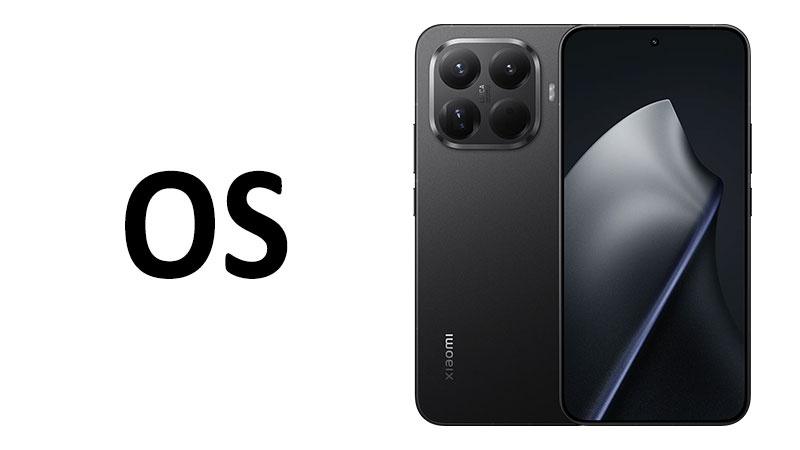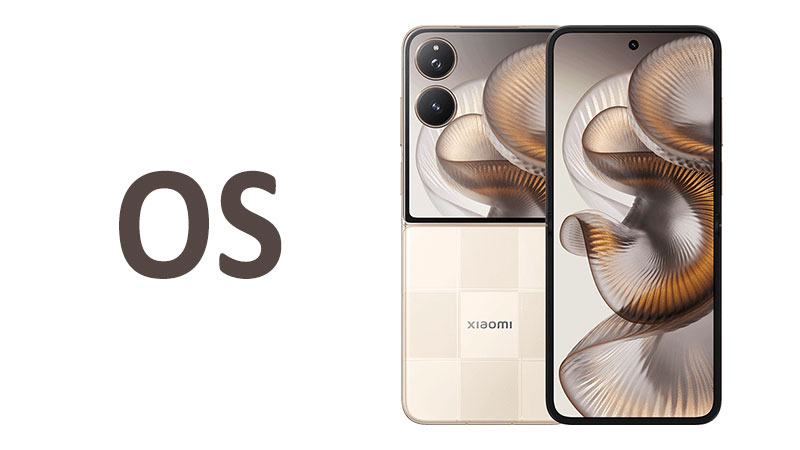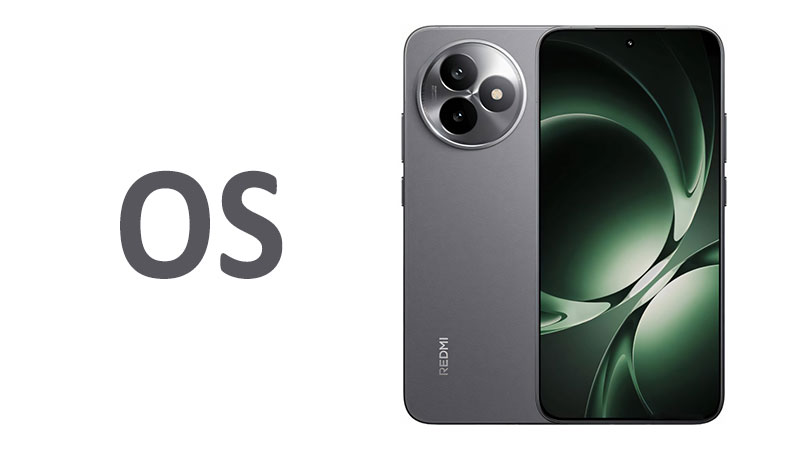This extensive article explores the core operating system powering the next-generation device. The Xiaomi 15T OS uses the cutting-edge Android 15 foundation, topped with the proprietary HyperOS 2 interface. Understanding this powerful combination is crucial for anyone considering the phone. This software stack dictates the device’s performance, user experience, security, and long-term viability. We will delve into the technical aspects and practical implications of this operating system pairing.
The Android 15 Foundation on Xiaomi 15T
The Xiaomi 15T benefits significantly from running on the latest version of Google’s operating system. Android 15 provides a robust and secure foundation for all device operations. This foundation focuses heavily on user privacy and core system efficiency. The integration of this OS ensures the Xiaomi 15T remains compatible with all modern applications.
Core Features and User Privacy in Android 15
Android 15 brings crucial enhancements to the permissions model. Users gain more granular control over which apps access sensitive data. For example, a new “Privacy Sandbox” improves ad targeting without sacrificing personal information. This change is vital for user trust and digital security. Furthermore, Android 15 refines the “Health Connect” platform. It makes personal wellness data easier to manage and share securely across apps.
The system introduces advanced security features like “Protected Confirmation.” This feature ensures that users, not malware, approve sensitive transactions. Every key press or biometric scan is verified at the hardware level. Such deep-level security provides peace of mind for financial and identity management. These features establish the Xiaomi 15T as a highly secure modern device.
Performance and Efficiency Optimizations
Performance is key to a flagship experience, and Android 15 delivers improvements. The updated OS fine-tunes the management of foreground and background services. This reduces unnecessary power consumption and improves multitasking fluidity. Project Mainline components also see essential updates in this version. Google can now push critical performance and security fixes more quickly.
The core memory management system is more aggressive and efficient. It intelligently suspends cached apps to free up RAM. This means the Xiaomi 15T can switch between demanding games and productivity apps almost instantaneously. Battery efficiency also sees a boost through optimized Doze Mode behavior. The phone enters a low-power state more intelligently when idle. Consequently, the device achieves better standby time.
Introducing HyperOS 2: Xiaomi’s Unified Interface
While Android 15 provides the engine, HyperOS 2 is the meticulously crafted bodywork and dashboard. HyperOS 2 represents Xiaomi’s next step toward a unified, cross-device ecosystem. It replaces the legacy MIUI system entirely. This new overlay focuses on lightweight design and interconnected intelligence. The visual language is cleaner, prioritizing functionality and smooth animation.
Design Philosophy and Visual Changes
HyperOS 2 showcases a minimalist and contemporary design aesthetic. Its iconography is softer and more consistent across the system. The use of depth and blur effects adds a subtle premium feel. The interface feels less cluttered than its MIUI predecessor. This makes navigation less daunting for new users.
The revamped Control Center is a highlight of HyperOS 2. It offers quick access to essential settings like Wi-Fi and Bluetooth. Users can customize the layout easily to suit their needs. Transition animations are noticeably faster and more linear. This visual fluency makes the Xiaomi 15T feel exceptionally quick in daily use. The emphasis is on speed and visual responsiveness.
Seamless Ecosystem Connectivity
The major differentiator for HyperOS 2 is its deep ecosystem focus. Xiaomi aims to connect phones, tablets, wearables, and smart home devices effortlessly. HyperOS 2 facilitates faster connection and data transfer between Xiaomi products. A new “Inter-Device Collaboration” feature allows quick screen sharing. Users can effortlessly drag and drop files between their Xiaomi phone and tablet.
This connectivity extends to peripherals like smartwatches and earphones. The OS remembers settings and switches audio output intelligently. For example, music playing on the Xiaomi 15T seamlessly transfers to a connected Xiaomi speaker upon entering the home. This creates a cohesive and productive user environment. It greatly enhances the experience for users invested in the Xiaomi ecosystem.
Resource Optimization and AI Integration
HyperOS 2 is built to be a significantly lighter and less resource-hungry operating system. This optimization is particularly beneficial for battery life and sustained performance. The core system files occupy less storage space compared to previous generations. This leaves more valuable storage available for user media and applications.
Furthermore, HyperOS 2 deeply integrates on-device AI capabilities. It powers features like smart text prediction and advanced image editing tools. The new AI subtitle feature can translate video content in real-time. This provides a tangible benefit for international users. The AI also manages system resources predictively. It learns user habits and preemptively allocates resources to frequently used apps. This ensures those essential applications always load instantly.
Specialized Comparisons and Competitive Edge
Understanding the Xiaomi 15T’s software requires comparing it to previous versions and market rivals. HyperOS 2 attempts to strike a balance between Android customizability and ecosystem integration. This section explores how the new OS stacks up against established standards.
HyperOS 2 Versus Previous MIUI
The shift from MIUI to HyperOS 2 is significant, not merely a branding change. MIUI was often criticized for its aggressive background process management and heavy design. HyperOS 2 addresses these concerns directly. It uses a different rendering engine, resulting in smoother frame rates. System updates are now delivered more efficiently, too.
HyperOS 2 boasts reduced pre-installed bloatware compared to the later MIUI versions. This contributes to a cleaner initial setup experience. The new file system management provides better long-term performance stability. Overall, the Xiaomi 15T offers a more refined and European-friendly software experience than its predecessors. This is a critical selling point for global markets.
HyperOS 2 Versus Market Competitors
Compared to Samsung’s One UI, HyperOS 2 emphasizes lightweight performance. One UI is comprehensive but can sometimes feel heavier or more complex. HyperOS 2 offers a slightly faster feel, especially during quick transitions. However, One UI might offer more deep-level, niche customization options.
Against OPPO’s ColorOS, HyperOS 2 leverages its hardware advantage in ecosystem devices. ColorOS is clean and fast, similar to HyperOS 2. Yet, the Xiaomi inter-device file sharing and collaboration tools are currently more advanced. The deep integration with Xiaomi’s smart home product line is a significant advantage. This provides a unique, comprehensive user experience. The Android 15 foundation ensures that both systems are on equal footing regarding core security.
Android 15 Stock Versus HyperOS 2 Overlay
It is important to differentiate between the core Android 15 system and the HyperOS 2 overlay. Android 15 provides the low-level security and compatibility layer. HyperOS 2 dictates the look, feel, and proprietary features. HyperOS 2 adds significant value through its theming and ecosystem features.
However, the overlay inevitably delays major Android version updates. It takes time for Xiaomi to integrate new Android features into HyperOS. Stock Android phones might receive Android 16 earlier. Users must decide if the rich features of HyperOS 2 are worth the slight delay in receiving the newest core Android features. The benefit of HyperOS 2 is the feature set you cannot get on stock Android.
Pros, Cons, and Important Buyer Insights
A balanced evaluation helps potential buyers make an informed decision about the Xiaomi 15T OS. The software package offers several compelling advantages but also presents some trade-offs.
Advantages of the Xiaomi 15T OS
The first major advantage is the System Performance and Fluidity. HyperOS 2 is demonstrably faster and lighter than older Xiaomi software. This translates directly to a smoother gaming and app-switching experience. The speed of the animation system is a key positive point.
The second strength is the Integrated Ecosystem Experience. For current owners of Xiaomi smart devices, HyperOS 2 is a significant upgrade. It creates a seamless workflow between all connected products. This interoperability is challenging for other brands to match.
Thirdly, users benefit from the Advanced Android 15 Security Features. The foundation provides the latest in privacy protection and system-level defense against malware. This ensures the device is protected against emerging threats.
Finally, the Visual Customization remains a strong point. Xiaomi’s theming engine within HyperOS 2 is extensive. Users can completely overhaul the appearance of their interface. This level of personalization is highly valued by many Android users.
Potential Drawbacks and Considerations
One common drawback in custom Android skins is the Presence of Pre-installed Apps or bloatware. While reduced in HyperOS 2, some proprietary apps and potential advertisements might still be present. Users should check regional models for specific advertising policies. These apps can occupy valuable storage space initially.
Another concern is the Pace of Major Android Updates. As mentioned, integrating new core Android features into a heavy custom skin takes time. Xiaomi 15T owners might receive the next major Android version later than Pixel or other pure Android devices. This is a standard trade-off for a feature-rich custom interface.
A final minor issue is the HyperOS Learning Curve. Users migrating from stock Android or competitor interfaces might need time to adjust. The Control Center placement and settings menu layout are slightly different. This initial adjustment period is generally brief but noteworthy.
Important Points for Buyers and Readers
Prospective buyers must confirm Xiaomi’s Software Update Promise for the 15T. Flagship devices typically receive three to four years of major Android updates. They also receive four to five years of security patch support. This longevity is crucial for maximizing the device’s value over time. Check the official announcement for the exact commitment.
Readers must also be aware of Regional Software Differences. Xiaomi sometimes customizes HyperOS features based on the target market. The Chinese version may have slightly different pre-installed apps or localized features compared to the Global or European version. Always purchase the model specific to your region.
Finally, app developers should know that App Compatibility with HyperOS 2 is excellent. Since it is built on Android 15, standard Android APIs function perfectly. Developers should ensure their applications fully support the new visual guidelines and screen ratios. This maximizes the user experience on the Xiaomi 15T.
Longevity and Software Support Commitment
The long-term appeal of the Xiaomi 15T heavily depends on its software support commitment. A premium device must offer several years of updates to maintain its security and functionality. Xiaomi has demonstrated an improved commitment to this aspect in recent years.
Security Patch Commitment
Security is paramount in modern mobile computing. The Xiaomi 15T is expected to receive at least four years of regular security patches. These patches address vulnerabilities found in the Android operating system and HyperOS. Regular monthly or quarterly patches are essential for protecting user data. Xiaomi has improved its efficiency in rolling out these critical updates.
This robust security commitment enhances the device’s resale value. It allows users to confidently use the phone for banking and sensitive tasks over a long period. The Android 15 foundation ensures that these security fixes are comprehensive and timely.
Major OS Update Commitment
The expectation for the Xiaomi 15T is that it will receive three major Android version updates. This means the phone should eventually run Android 16, Android 17, and Android 18. Simultaneously, Xiaomi will update the HyperOS overlay to HyperOS 3, 4, and 5. This ensures the user continues to benefit from new features and technologies.
This update cycle is competitive with other major manufacturers in the Android space. It offers users the peace of mind that their hardware will remain relevant. A long software life cycle is a strong indicator of build quality and long-term value.
The Long-Term Value Proposition
The combination of premium hardware and long-term software support provides excellent long-term value. The speed and efficiency of HyperOS 2 will not quickly degrade over time. The sustained security updates prevent the device from becoming a security risk. A long commitment to the operating system makes the Xiaomi 15T a smart investment.
Buyers can expect the phone to perform optimally for three to five years. This longevity is often a deciding factor for users who avoid frequent phone replacements. The HyperOS ecosystem integration continues to add utility with every new device Xiaomi releases.
Conclusion
The Xiaomi 15T operating system is a powerful duality built on solid foundations. It successfully merges the cutting-edge security and efficiency of Android 15 with the seamless, intelligent experience of HyperOS 2. The result is a fast, highly customizable, and deeply interconnected mobile platform. The move to HyperOS 2 represents a clear step forward for Xiaomi. It reduces bloat and prioritizes a unified, cross-device experience.
Prospective buyers, especially those already invested in the Xiaomi smart ecosystem, will find the software highly rewarding. New users will appreciate the visual fluidity and customization options. While the update pace may lag slightly behind stock Android devices, the added features of HyperOS 2 justify the trade-off. Ultimately, the Xiaomi 15T offers a mature, secure, and future-proof software experience.
Frequently Asked Questions (FAQ)
1. Is HyperOS 2 the same as MIUI? No, HyperOS 2 is the successor to MIUI. It is a completely re-engineered operating system focusing on lightweight design and unified ecosystem connectivity.
2. How long will the Xiaomi 15T receive Android updates? The Xiaomi 15T is expected to receive at least three major Android version updates and four years of security patches.
3. Does the Xiaomi 15T support Android 15 features? Yes, the HyperOS 2 layer runs directly on the Android 15 foundation, supporting all core features like the new privacy controls and performance improvements.
4. What is the key advantage of HyperOS 2 over competitors? The key advantage is the deep, seamless connectivity and data transfer between the Xiaomi 15T and other Xiaomi smart devices and peripherals.
5. Are there different versions of HyperOS 2 based on region? Yes, the Global, European, and Chinese versions of HyperOS 2 may have minor differences in pre-installed apps or regional feature availability.



